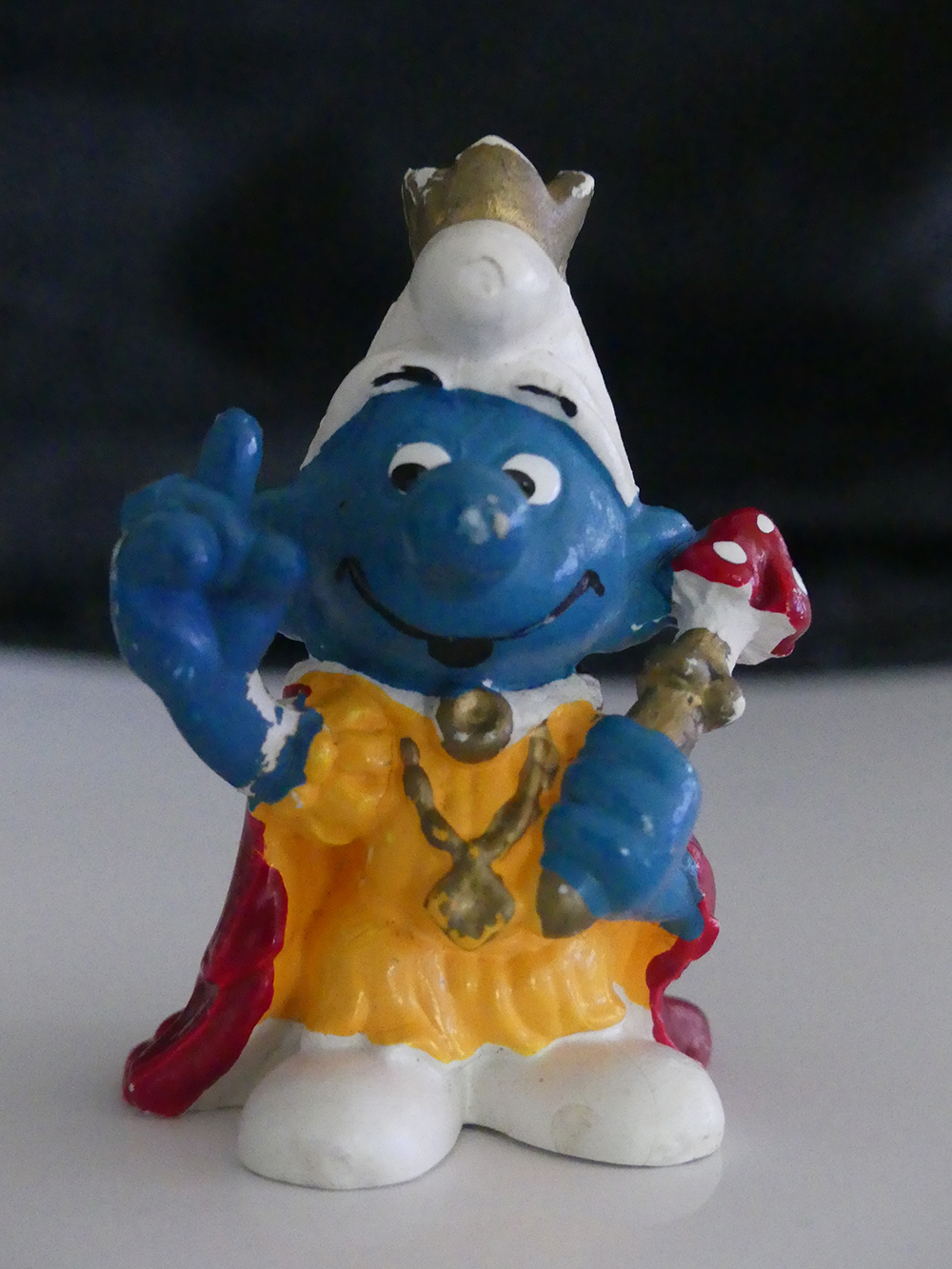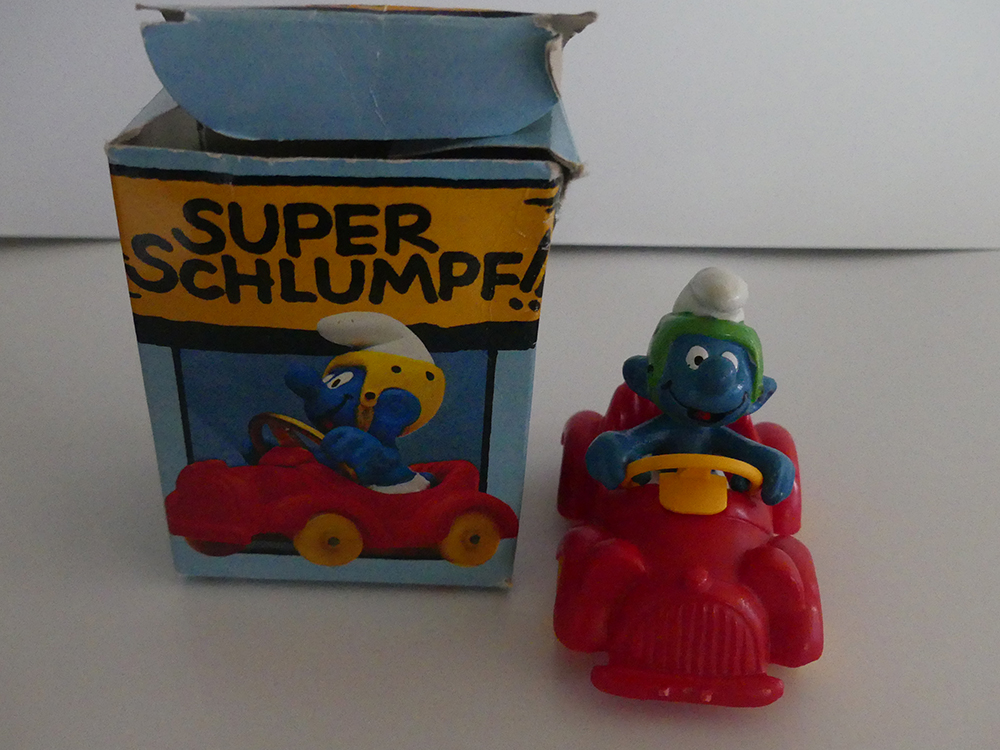Toys - Smurfmania from the Golden Years: A Closer Look at the Schleich Smurf Figurines from 1980 to 1989
By Mulder, 24 may 2025

In an age where plastic toys flood the market in disposable waves, there remains something unmistakably timeless and profoundly nostalgic about the hand-painted PVC Smurf figurines created by Schleich during the 1980s. For many, these miniature blue characters were more than just collectible figures—they were portals into a whimsical world crafted by Belgian cartoonist Peyo and carefully translated into three-dimensional magic by the German toymaker Schleich. The photo you've shared offers a powerful visual journey through that decade of creativity, showcasing a rare and diverse ensemble of Smurfs that stand as a testament to a golden era of character figurines, design precision, and childlike wonder.
The 1980s marked the Smurfs' peak in popularity, bolstered by the global success of the animated series that began in 1981. As the Smurfs gained household fame, Schleich expanded its line to include dozens of thematic figurines each year, often drawing inspiration from seasonal events, sports, international costumes, and classic European fairytale tropes. What sets the 1980s apart from other decades in the Schleich Smurf timeline is the unapologetic richness in diversity—each figurine wasn't just a variant, but a whole story in itself, captured in a frozen gesture or an accessory-laden pose. From the deeply symbolic to the purely comedic, the figures crafted between 1980 and 1989 represent a mosaic of narratives that reflected not only Peyo’s whimsical imagination but also a broader cultural appetite for personality-driven playthings.

Within the set featured in your image, it’s impossible to ignore the eclectic cast of characters, all brimming with personality. There’s a regal Smurf King, a nod to the medieval and fantasy themes that were especially prevalent during this period, often accompanied in collections by wizards, knights, and peasants. Close by, the marching band is represented by a drummer Smurf and maraca-holding performers—clearly figures from a subset of musical Smurfs that aimed to celebrate performance arts in a joyful, visual way. One can also spot a Smurf cowboy with a hat and banjo, echoing Western film tropes that permeated European pop culture in the 1980s. Perhaps most intriguing are the sports and utility-themed Smurfs—like the injured Smurf with bandages or the chef Smurf wielding a wooden spoon and egg, who evoke everyday activities and reinforce the Smurf village as a microcosm of real-world professions.
But this collection doesn't only serve as an homage to character diversity. It’s also an education in the high standards of 1980s toymaking. Each figurine was meticulously crafted and hand-painted, often with accessories that were themselves sculpted to scale. The expressive details—wide eyes, open mouths, furrowed brows—imbued each Smurf with emotion, making them more than just toys. The paint, even decades later, clings resiliently to their forms, and in collections like yours where many accessories are still intact, the figures can command significant interest among collectors. Smurfs like the “Black Smurf” (a reference to the now-renamed "Purple Smurf") are especially valued due to their controversial backstory and rarity in mint condition. Similarly, Smurfs carrying props—flowers, instruments, wrapped gifts—are often from limited seasonal or promotional releases, adding even more significance to their presence in a collection.

For those outside the collector's sphere, it may be difficult to grasp just how much care went into these figures. Yet among enthusiasts, a complete or nearly complete 1980s collection like this one is akin to a miniature museum—a display not just of merchandise, but of a cultural phenomenon that transcended borders. These figurines, often found in cereal boxes, toy stores, or even gas station promotions across Europe, weren’t just consumed—they were cherished, displayed, traded, and handed down. The emotional legacy they carry is as much a part of their value as the materials and craftsmanship themselves.
Today, in an era of mass-produced plastic and digital entertainment, the 1980s Schleich Smurf figurines stand out as artifacts of care and creativity. Collections like the one you've shown are increasingly rare, especially in such well-preserved condition. They serve as reminders of a slower, more deliberate era in children's entertainment—when storytelling lived in physical objects, and each new Smurf brought not just another collectible, but another tiny life into a growing world. Whether you’re preserving this set for nostalgia, display, or passing it on to the next generation, one thing is clear: these Smurfs don’t just tell the story of a village—they tell the story of an era.

Discover our photos in our Flickr page
Photos : Boris Colletier / Mulderville

